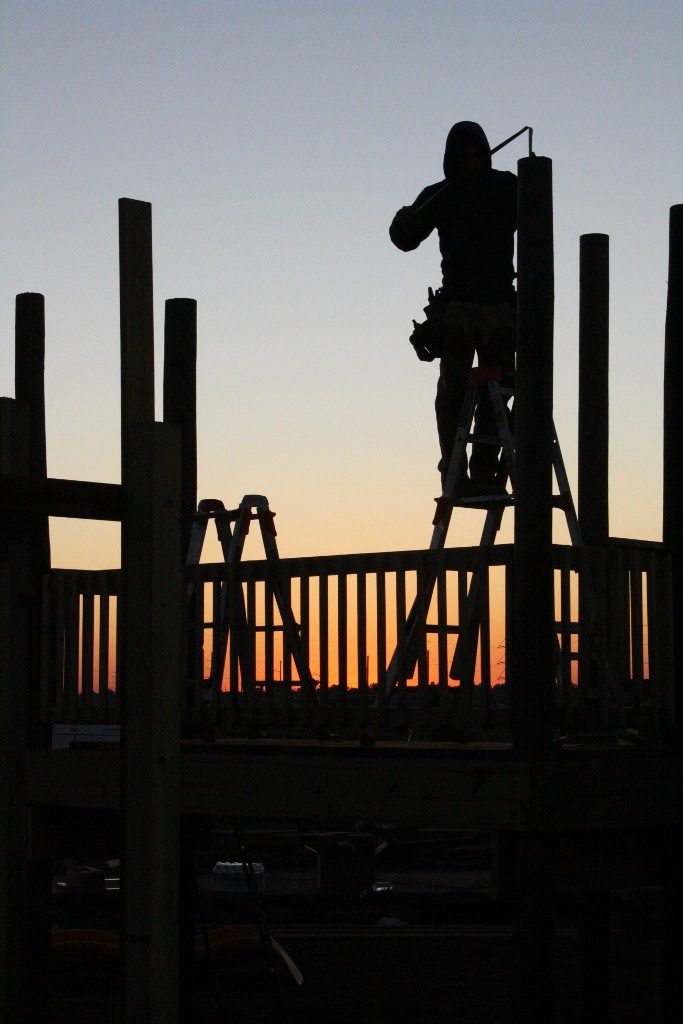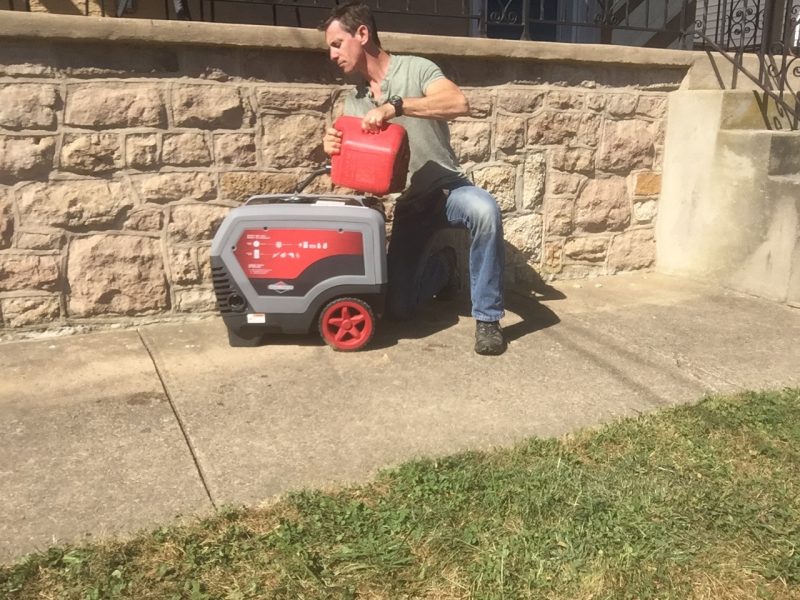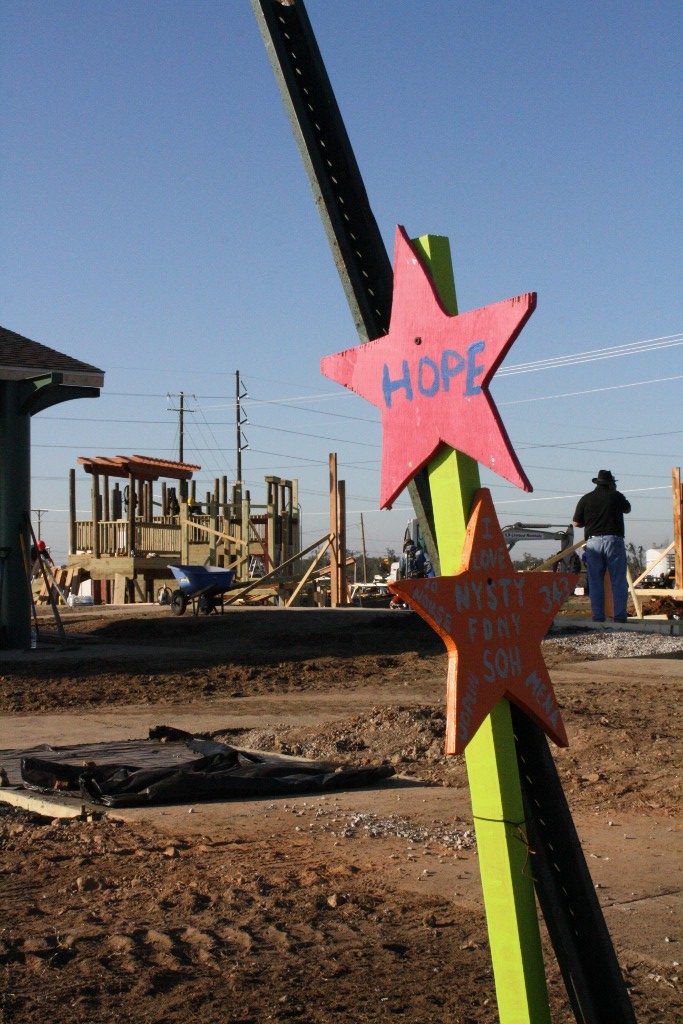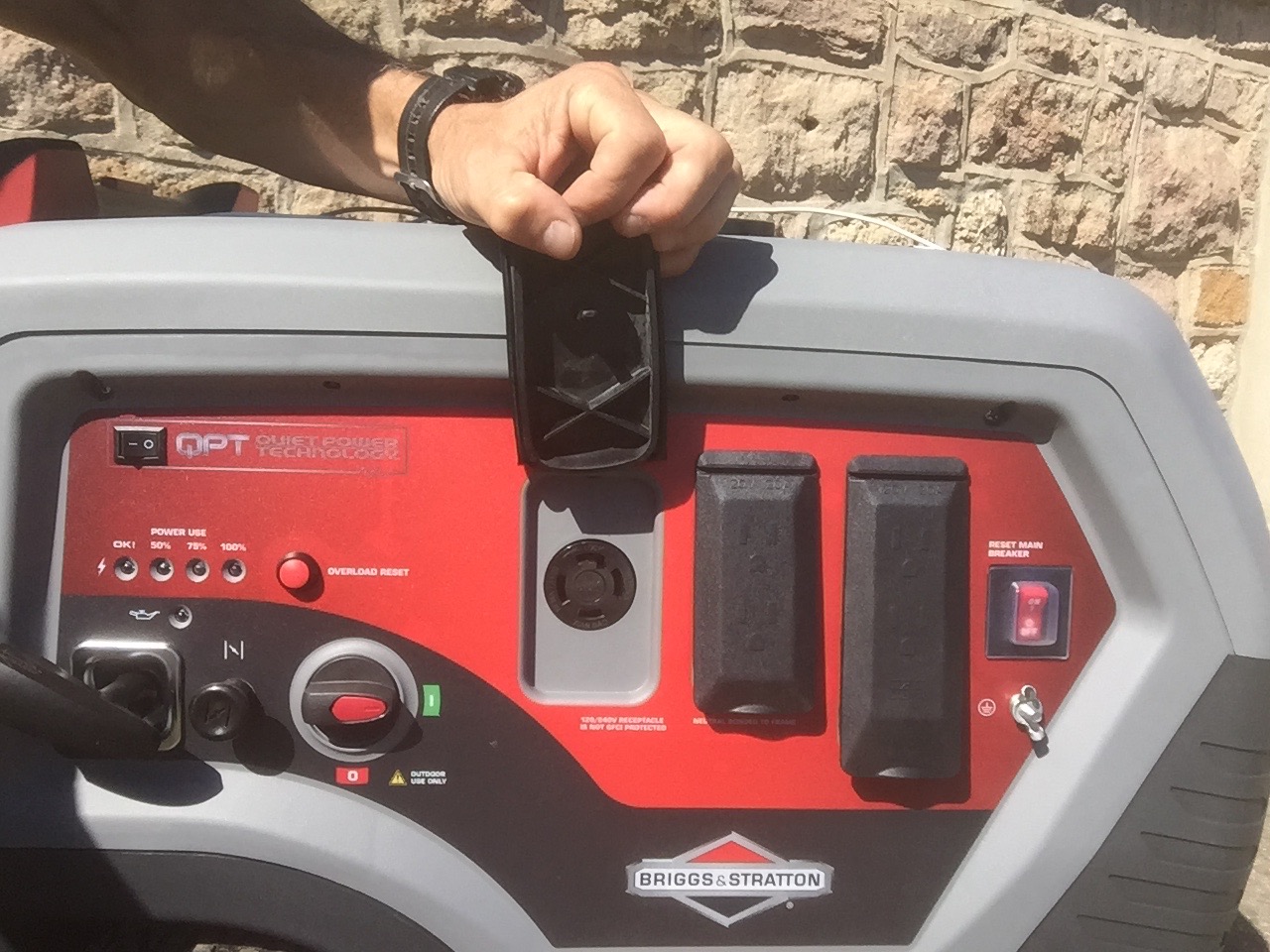
A portable generator is power—that means normalcy, heat, hot showers, safety—when there is none. It’s real payback: Connecting people and power cords.

Note: We worked with Briggs & Stratton on this blog. The thoughts, opinions, experiences and how-to are 100% MyFixitUpLife’s. It’s how we roll. The Q6500 QuietPower Series inverter generator is available through Home Depot, Amazon, Power Equipment Direct.
This may be sappy, but it’s true. At least for me:
After experiencing some facet of land-stripping, tree-shredding, coast-flooding storms like Hurricane Bob, The Perfect…, Katrina, the nameless EF-5 tornado in Joplin, MO, that ice storm with no name right after Joplin, Super Storm Sandy, and the blizzard Jonas I search my memories and, of course, I remember the things I saw.
But I’ll be; I feel the people who came together to help. And, oddly, gave me some of the best and most meaningful experiences of my life.
And that’s the point of the photo above. In order to help, you need to be powered up. It’s not marketing. It’s a fact. I’ve seen it. I’ve lived it.

After a few of these storms (many of these photos are from our time in Joplin), we joined in to help out where we could. We used power tools, love and compassion for our fellow humans in one mishmash of emotion, commerce and togetherness. And yes, amidst it all, we found a way to smile. So, you would think that after experiencing in one way or another these disasters that I’d immediately be inspired to become the generator-buying Facilities Manager of my own life.
Yeah, I didn’t do that. The extreme gave way to normalcy and life went on. My lights always turned on. Always.
Until Sandy knocked out power for a week in our home. It unplugged us. Everything stopped. It was really, really cold.

One small move I could have—should have—made is getting a generator long before that storm. I failed to do that. One. Small. Move.
Then we teamed up with Briggs & Stratton to talk about the new Q6500 portable inverter generator and it became obvious to me how ill-prepared we really were. I mean, we were nowhere near ready for the next big blow.
The only way to sense the true value of the simple, every day act of the heat coming on is being cold when it doesn’t come on. Instantly you realize how precious little lies between comfort and freezing cold when it doesn’t work. That’s when we feel it most—not today, not reading this blog, not tomorrow at work. You feel it in the moment, that civilization is literally different when the power is out. That’s a lot to think about.
My advice to you: Take control. Now!
OK, maybe this weekend, but decide to take action.
First, assemble a kit and make a plan. Like buying car insurance, you’ll be glad it’s there when you need it. Use the FEMA storm preparedness kit as a baseline. It talks about food, water, flashlights, eye glasses and cat food.
I’m going to add making a Generator Activation Plan for my Q6500 part of my storm-prep process.
Reason is, I can start my lawnmower in the dark because I have started it a million times. With the Q6500, the opposite is the case. While I may use it for parties or camping, I want to make sure I can set it up correctly and quickly when the time comes. My plan is just a simple order-of-operations. Nothing fancy. I’ll print it, put it in a freezer bag and duct tape it next to the transfer switch in my mechanical room so there’s no looking around when the time comes.
Tip: A portable generator must be run outdoors because—like any engine—it produces carbon monoxide (deadly, as we all know). It also must be kept clear of any potential combustibles like a fence or tree. If you are worried about the unit being stolen, get a 10-foot cable and a big lock and lock it to something. If there’s nothing close, a few cinder blocks can be used as an anchor. I’m hopeful I don’t need that measure of protection, but I’m not naive either.

Left The transfer switch which looks just like a small breaker panel You may never even have to open the door Right The only item you have to touch indoors Its seriously simple
Also, our electrician All Phase Electric did us a total solid after they installed the unit. They sent labels for the “generator disconnect” (right). The box itself is not marked. Again, so I don’t have to remember anything, it’s labeled On – Off. We should add a third one for those guys—awesome. Dweeb Alert: Look how neat and tucked in those wires are. OK, moving on.
Having backup power means my family can more comfortably ride out the storm until the utility crews can restore power. A portable generator is what keeps the food cold, the coffee hot and the well-pump running (no water during Bob; we had a well…not a lot of fun.)
Tip: Help protect your home’s power—and the devices in it—from the vagaries of weather. From a summertime super-cell to more powerful, longer lasting events. A whole-house surge protector is far and away a more robust choice than store-bought power strips. A whole-house surge protector should be installed by a licensed electrician.
You don’t need a natural disaster to upend your life. Snow can drop power lines for weeks. An ice storm can disable your local grid. Or a car accident can blow a transformer at the end of the street which can shut the heat off to your neighborhood.
No news trucks. No army of volunteers. Just you, the weather—that’s now the same inside as it is outside—and figuring out when the utility company can fix it. If you can power up, you can help your neighbors, help your family, help yourself. It’s that simple.

So, even in the face of big problems we can make small moves. We can connect ourselves, our families, our friends. Rather than floating aimlessly, we can be ports in the storm. And it doesn’t take much. But it does take something.
We can make sure our trees are healthy and pruned far enough away from the house before the wind is howling by consulting an arborist. We can make certain there is frozen food and a provision for medicine or for where an elderly family member goes if the power is down. And that our storm preparedness kit go-bag-fast to get.
And, yes, that our portable generator is rocked and ready.
Tip: Put the paper instructions in a storage bag on the unit’s handle in a freezer bag with some duct taped. Dogear the Starting Instructions page. You might forget Step 4 and not be able to look them up online. This is not the time for trial and error. It’s the time for action.

I’ll never forget the feeling of Hope in Joplin. Of Grit in New York after Sandy and a million other emotions, people and things. And, the both bright and bitter realization that we become ourselves in times of crisis, proving sometimes the world is and isn’t “sunshine and roses” (I think I got that from the speech in Rocky Balboa).
Because in the end, the best way to get through storm damage is being connected. It’s how you do it and what you do it with that achieve that goal.
Storms will come. They don’t care about you. They don’t care, period. But with a portable generator and a plan, you empower yourself to care. To be a helper when help is needed.

Image already added



